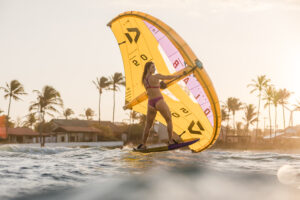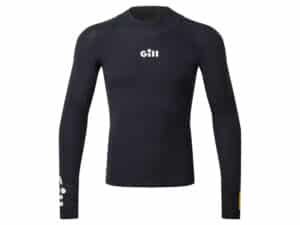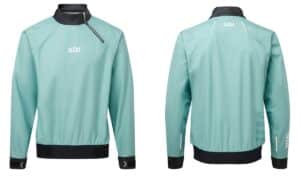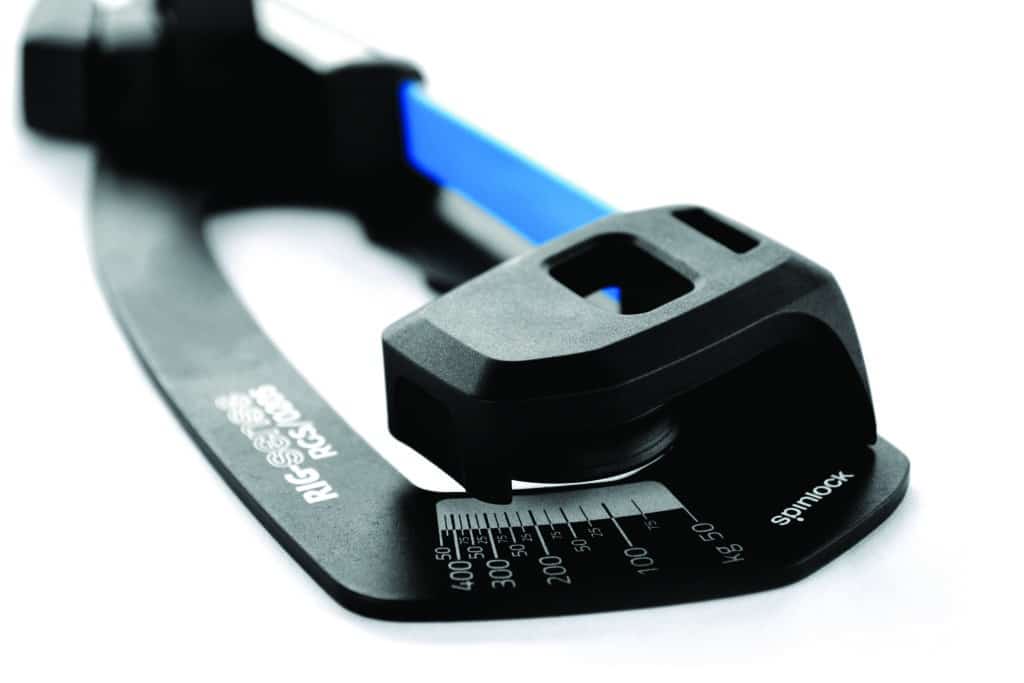
For two decades, my go-to tool for measuring rig tension on dinghies and small keelboats has been the Loos PT-1 gauge. In all that time, I’ve never seen two gauges read the same, even when brand-new — and once a gauge has been tossed into a tool bag a few times, that variability increases. As a quick reference for my seat-of-the-pants approach to rig-tuning, that’s fine; for those of you looking for more accuracy, however, consider stepping up to the Spinlock Rig-Sense gauge.
I took the Rig-Sense and its app to the Florida State Snipe Championship to test it out in the real-world conditions of a boat park. To get accurate settings when other sailors are constantly interrupting (“Hey, can I borrow your tape measure?”), using the gauge needs to be a simple process. The Rig-Sense made it simple indeed, and I appreciated its one-handed operation.
The Rig-Sense is about the same size as the Loos gauge, though it is a bit heavier. It works the same way, by hooking onto a stay and measuring its deflection, but instead of using a coil spring, it measures the tension on a composite leaf spring (think flat-batten stock).
To use the gauge, lock the bottom onto the wire and then use a fair amount of thumb pressure to slide down the lever until you can capture the wire in the top of the gauge. The scale at the bottom reads in kilos, so Spinlock provides several conversion charts at the end of the user manual. The most useful one translates directly to kilos from a Loos gauge number. With both gauges on the same wire, the conversion was spot on for my 3/32” shrouds.
I probably shouldn’t admit this, but it took a little head-scratching before I figured out how to read the scale, because the numbers vary quite a bit in size. I was overcomplicating it, assuming (from all those years with the Loos gauge) that there was a separate scale for each wire size. Once I realized I was looking at only one set of numbers, it made perfect sense.
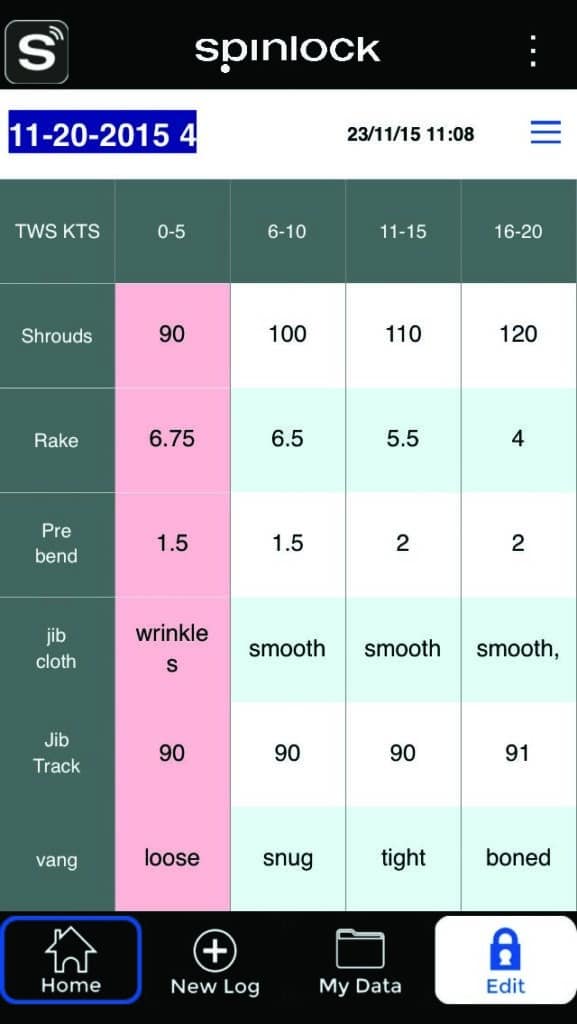
The Rig-Sense app is set up for recording rig settings. The templates are pre-built with wind strengths across the top and a long list of tuning specs running down the left side. Spinlock is a U.K.-based company, but U.S. users should be able to translate “kicker” to “vang” — or create a custom template that renames that row. There’s also a “notes” section for random thoughts.
The app is easy to navigate and use. However, selecting an item doesn’t highlight it in the list, which made deleting a little worrisome. It did prompt me to record several settings I usually forget to track: cunningham, jib-cloth tension, jib leads. Once saved, it was easy to email the data file — though thanks to AutoCorrect, “6-10 knots” of windspeed became “6/10/2015.”
The Rig-Sense gauge has the same issue that a one-design class has: It would be best if everyone in the boat park had the same one. That said, it’s a valuable tool for checking and reproducing fast settings, and since it’s so easy to use, it may even motivate me to a higher standard than my usual laid-back approach to tuning.


